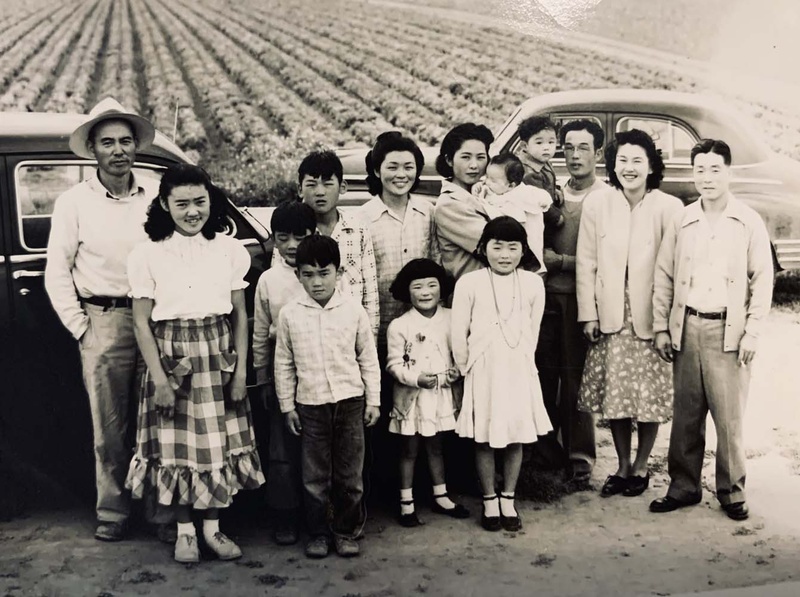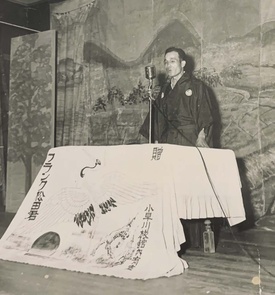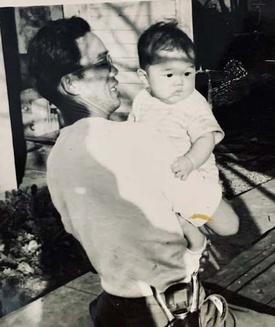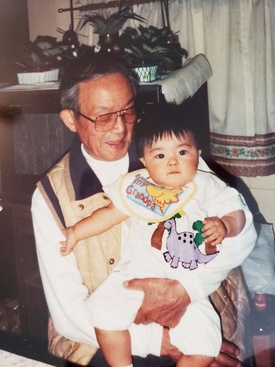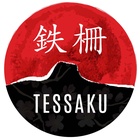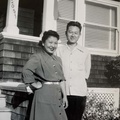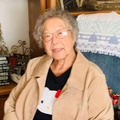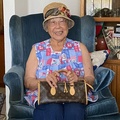“If I was my dad, I would’ve done the same thing. You’ve taken everything away from us, now you want us to fight for this stinkin’ country? No way.”
—Doug Matsuda
In the middle of a cold, January night in 1943 in the Arizona desert, eight young men ventured out between rows of barracks to convene in front of Block 215, room D. Carrying heavy wood clubs and donning handkerchiefs to mask their faces, they went over once more the details for the plan they were about to carry out. After jamming the neighbor’s barrack doors with pegs to keep them from opening from the inside, they removed the door hinges to room D, in front of which six men would stand guard while the other two would enter.
Inside slept Saburo Kido, National President of the Japanese American Citizens League (JACL), a lawyer, and vocal advocate for Japanese American men of draft age to volunteer to serve in the US Army. For his pro-draft views and close ties to white leaders within the government, Kido had already been the target of attacks by incarcerated Japanese Americans who viewed his push for patriotism as a slap in the face.

The first attack occurred just four months earlier in September, resulting in minor injuries and nightly police protection in front of Kido’s barrack. But this time, the severity of the attack would be different. This time, the group of eight wanted Kido to suffer significantly for asking the young Nisei in camp to serve a government that had imprisoned them.
In the chaos, fear and rampant prejudice following Pearl Harbor, the JACL’s blundering response is well-documented. After the attack, Kido sent the following telegram to President Roosevelt: "[I]n this solemn hour we pledge our fullest cooperation to you, Mr. President, and to our country...now that Japan has instituted this attack upon our land, we are ready and prepared to expend every effort to repel this invasion together with our fellow Americans."
In cooperation with the FBI, the JACL played a role in identifying “suspicious” Issei men, who were in turn apprehended and imprisoned without any criminal charges in the hours and days after Pearl Harbor. Also well-documented are the atrocities and even deaths of these men that occurred at the hands of the FBI, leaving widowed wives and fatherless children to go into camp alone.
The tensions between two second generation groups in camp—the English-speaking Nisei and the Japanese-speaking Kibei—though deeply layered in complexity, might be best summed up with the one word insult that many Kibei used to refer to those who did the camp authority’s bidding: inu (dogs). As Kido was instrumental in garnering legislative support for the Nisei soldiers to serve in the military, he was destined to be a divisive figure, a representation of the bitter conflict between the two sides.
Waiting outside Kido’s room at 2 o’clock in the morning was 21-year-old Miyoshi (Frank) Matsuda, a Kibei born in Penryn, California and educated in Japan. As the Matsuda family was separated from their parents before the war, Frank was incarcerated in Poston alone with his brothers. How Frank became involved with the attack on Kido remains unclear but it was determined that Frank and 19-year-old James Tanaka would be the two men to carry out the assault. Inside room D, Kido, his wife, Mine, and their family friend, Violet Ishii, were fast asleep.
Once their door was removed, Frank and James entered the room. But immediately after waking up, Kido recognized Frank. “You are Matsuda, aren’t you?” Frank was thrown off guard, and Kido lunged at him, pinning him to the ground. After James stepped in to assist Frank, Mine and Violet’s screaming woke up the neighbors, who found their own barrack doors jammed. One neighbor exited through the barrack window, while another broke down their door. In the frenzy, the group of six outside scattered, while James left behind one of his shoes. Frank was arrested by the military police and taken in for questioning the same night. Initially placing the blame on himself, the entire group was eventually implicated and rounded up. Kido was hospitalized and unconscious for two days, with bruises around his head and shoulders and a recovery that took nearly a month.
As for the group’s fate, all but one were sentenced to four years in the Arizona State Penitentiary in Florence. To Kido’s credit, or fear of further retaliation, he declined to press charges against the group. “They were just mixed-up kids,” he said. As a precaution, he and his wife were granted an early leave from camp, gaining a head start on rebuilding their lives in Salt Lake City just one month after the incident.
Two more years would pass until Frank was able to begin his own life again, leaving camp at the age of 23 and a trail of newspaper articles, WRA files, and a court case in his wake. But in a fortunate turn of events, he would be introduced to his future wife, Misao Akamichi, through Tadao Hasegawa, also one of the eight involved that night. Frank and Misao rebuilt their lives post-camp and started a family in Los Angeles, traveling the country frequently and becoming active members of their Buddhist temple.
Frank would never speak of his camp experience until decades later, after his four children were adults themselves and he was an older man. Today his second eldest son, Doug, and youngest daughter, Patty, are the keepers of their parents’ memory. A mechanic by trade, Doug still lives in and cares for his parent’s original house in Leimert Park.
Though he was the only one to hear the story of Poston directly from Frank, Patty maintains that she had the closest relationship with her father and remembers him fondly and with palpable love. “My dad would do anything for us. I vividly remember going to kindergarten in Inglewood where he had his laundry business. I would get out of school and I’d be running down the hill and I ran into Daddy’s arms, and he would give me a big old hug.”
After her son, Tyler was born, Frank and Misao would spend many nights at Patty’s house doting over their grandchild. “Tyler and his Jichan were so close with such a special bond. And Tyler’s middle name is Miyoshi.”
Patty recalls that her parents embraced spontaneity through frequent and last minute road trips. “Every state this side of South Dakota, we went to. Always driving.” As her parents aged, Patty made it a point to take them on trips whenever she could, wanting to avoid the regret of lost time and opportunities.
Frank would pass away decades before his wife at age 76, just weeks before their 50th wedding anniversary. When I asked Patty about whether her father carried any guilt from what happened in camp, she thinks it was likely.
“One thing that Dad would say is, ‘I’m good for nothing, I’m a son of a bitch. You have the worst father.’ He carried that. Now that I know what happened that’s probably what he harbored because of what he did. And I wish I could tell him that I’m proud of him for standing up for what he believed in. I’m not ashamed of him at all.”
As Patty continues to learn more about her father’s camp history, Doug carries on Frank’s devotion to the Senshin Buddhist temple as its maintenance person and handyman. The following interview with Doug was conducted in 2019, in the family home.
* * * * *
What was life like for your mother’s parents before the war?
My maternal grandfather worked for the people who owned the Hamburger department store chain which later became May Company. My grandfather worked as a cook for them and my grandmother was the housekeeper.
So when the war broke out and they interned everybody, the owners hired an attorney to go see a judge to keep them out of camp. But the judge says, “You know, I can’t do that. If I do it for you, I have to do it for everybody.”
So the Hamburgers would come visit them as much as they could up in Tule Lake. When the war ended and everybody was released, they met them at the train station with a limousine, picked them up, and took them back home.
So they remained loyal to your grandparents throughout the war.
All of the other people that were in camp, a lot of them lost their houses and everything, right? But Mom, Jichan, and Bachan had a place to go home to. And a lot of other people had nothing because you didn’t have any money or anything; they sold their house for pennies on the dollar. So a lot of them stayed at the temple that I go to now [Senshin Buddhist Temple] until they could get back on their feet. Jichan and Bachan, and Mom, since they were taking care of these people, they took care of them, too.
How about your father’s side and his parents, do you know about their background?
All I know is Dad’s parents, they must have lived in California. Mom used to tell me Dad was born in Northern California and then he was sent back to Japan and raised by his grandparents. Then somewhere along the line he came back to the United States and was living in San Francisco. He used to do oratoricals [in Japanese], speeches, and used to get these trophies.
To be continued ....
*This article was originally published in Tessaku in November 15, 2021.
© 2021 Emiko Tsuchida


